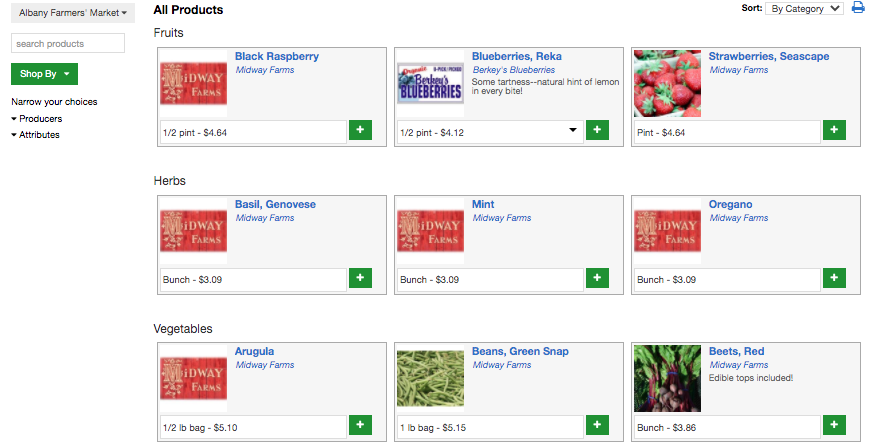Farmers markets get help switching to online ordering
Published 5:00 am Saturday, July 4, 2020

- A screenshot of a portion of the Albany Farmers Market online ordering page.
The Oregon Farmers Market Association is helping its members establish online ordering systems to adapt to the COVID-19 pandemic restrictions.
As more farmers markets seek to move transactions online, managers can consult the association for technical assistance and software recommendations.
“We’re here to help them understand their choices and support them in implementing the choices they make,” said the association’s executive director, Kelly Crane.
So far, the association has assisted 27 farmers markets — about a quarter of the state’s total. In Central Oregon, Sisters Farmers Market offers online ordering, according to the association’s website.
“Farmers markets are really nimble, creative entities,” Crane said. “They’ll be the first to tell you, every market is different” with unique needs and challenges.
Some farmers markets can’t operate on site because of local regulations. Others don’t have space to accommodate social-distancing guidelines. Several are waiting on delayed permits.
Many have concerned customers opting out of on-site visits.
To limit interactions, more farmers markets are letting customers order and purchase goods such as berries, fruits and vegetables on the internet before pick-up.
“(Customers) don’t have to exchange money, pick things out and have it weighed — it’s all ready to go,” Crane said.
Some farmers markets offer it as an option, while others have opted to have all customers pre-order online.
For example, in Florence, the farmers market is online-only because many of its customers are retirees, who have a higher risk of becoming seriously ill from COVID-19.
“It’s like we’ve totally reinvented our market,” said Mary Shaw, the market president. “The customers are very grateful to have access to local food.”
Tourist revenue is much lower, but Shaw’s priority is to offer high-quality food to the local community. So far, revenue resembles the market’s first season, three years ago.
Shaw is still working to reach customers who use Supplemental Nutrition Assistance Program benefits with the Oregon Trail card to purchase food.
“They are the cornerstone of our market,” Shaw said. Many don’t use computers or relied on computers at the library, which is still closed.
Online platforms can’t process the Oregon Trail card, so SNAP customers pay at the information booth when they pick up their orders.
While Shaw misses community members congregating at the market, there are no plans to open as a walk-in market.
“The market is doing well,” she said. “Sales are trending upwards,” thanks to the online adjustments, which will be a permanent option beyond the pandemic.
Crane, the head of the state farmers market association, believes the online adjustments will help farmers markets in the long run.
“Industry leaders have been really interested in this topic,” she said.
“We see the customer trends, and we’ve wanted to get our farmers markets interested for long-term viability.”
Before the pandemic, there was little reason to move business online because the state’s farmers markets are so popular.
“One silver lining of this crisis is that it’s created an incentive to make a behavioral shift,” Crane said.
“Once those habits are built, it will be normal for farmers markets to have online vendors keeping their product up-to-date.”
In 2019, Oregon’s farmers markets sold $63 million worth of products from 6,700 vendors.
“That’s 6,700 small businesses” that rely on farmers markets to operate, Crane said. “People think of farmers markets as cute, but collectively, they are also a significant cornerstone in Oregon’s agriculture industry.”






